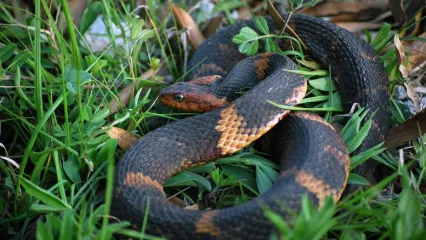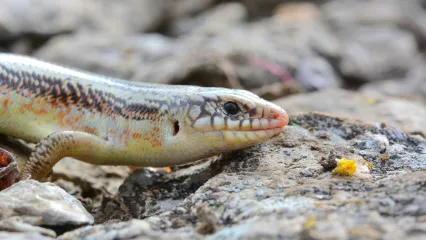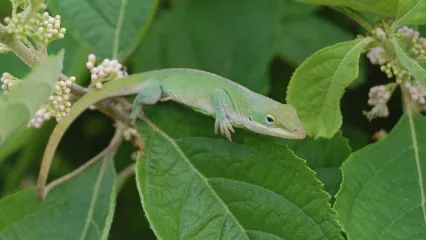
Description
Broad-banded watersnakes are heavy-bodied aquatic snakes with a series of 13017 irregular, wide, and dark bands across a background cream coloration. Along the top of the body, the dark bands are separated by 3-4 scales of lighter coloration. In some individuals, the bands are so broad that the lighter background coloration is confined to very narrow bands. The side and underside of the head and neck is usually yellow or cream-colored. The belly is light colored with rectangular belly markings that are reddish, tan, or light brown. Sometimes these rectangles are clustered in sets of two, three, or four. Scales on the dorsal surfaces of the body are heavily keeled. The pupil of the eye is round and there are no facial pits between the eye and the rostral as in pit-vipers. These snakes can be easily distinguished from plain-bellied and diamondback watersnakes by the combination of broad bands on the body and rectangular markings on the ventral surface. Although broad-banded watersnakes, especially juveniles, might be confused with western cottonmouths, cottonmouths have elliptical pupils, a distinctly diamond-shaped head, pit structures between the eye and nostril, and the belly contains large blocks of black or dark brown.
These snakes are common where they occur and, other than the loss of wetlands, no immediate threats to their persistence are evident.
Size
Large adult broad-banded watersnakes can reach more than four feet in total length. However, most that are observed in the field are two to three feet long.
Habitat
Broad-banded watersnakes occur in aquatic habitats across southeastern Oklahoma reaching the central-southern part of the state along the Red River drainage. In North America, the distribution extends west to east from central Oklahoma up the eastern seaboard through North Carolina and north to south from extreme southern Illinois to the southern tips of Florida and Texas.
Life Cycle
Broad-banded watersnakes can be found in nearly every imaginable aquatic environment, including streams, swamps, rivers, ponds, lakes and roadside ditches. Most feeding occurs at night, and the diet is dominated by fish. They capture fish by holding their mouths open underwater while moving their heads back and forth. They are capable of quick sideways head motions allowing them to capture fish. Nevertheless, broad-banded watersnakes eat a wide variety of prey, including amphibians and the occasional bird. Like other watersnakes, they frequently bask on vegetation that overhangs water, dropping silently into the water when approached. The activity season is extended, from March through October. Females reach sexual maturity at a size of just over 21 inches. Mating occurs in spring. Similar to other watersnakes, broad-banded watersnakes are live-bearing, and large females can produce many offspring. The number of offspring varies from as few as seven in small females to more than 20 in the largest females and birth occurs in late July through August.
How To Observe
Broad-banded watersnakes often bask on vegetation overhanging water or on surface objects in water. They can be approached rather easily by boat. At night, they can be observed by searching along the edges of streams, swamps, ponds, and lakes where they are usually observed in shallow water.
(This profile was created by Dr. Laurie Vitt as part of a partnership between the Wildlife Department and the Sam Noble Oklahoma Museum of Natural History. It was funded as part of a larger State Wildlife Grant to survey and inventory amphibians and reptiles of the Wildlife Management Areas of Oklahoma: T-35-P-1.)


